After watching Paprika (here is the link to my review: Paprika review), by Satoshi Kon, I fell in love with the Japanese director and decided to watch also other movies from him. I started with Tokyo Godfathers, one of the most famous, and I watched it last week, so today here I am making the review of this great animation movie.

Plot
On Christmas Eve, three homeless men come across a tiny child who has been abandoned among the garbage. While Hana, a trans woman who became impoverished after abandoning her profession as a drag queen, wants to keep the baby because she believes it is a gift from God, Gin, a wandering drunkard, and Miyuki, a runaway girl, wants to take the baby to the police right away. They eventually persuade Hana to keep her with them only for the night, but when they wake up the next day, they realize she has abandoned their temporary shelter. Following tracks that frequently lead them to get lost, they attempt to return the infant to her parents after discovering her. The three of them will experience varied adventures throughout the course of the week between Christmas Eve and New Year's Eve, coming into contact with the diverse humanity of Tokyo while on the trail of their past and personal stories.
Why you should watch it
The main reason, in my opinion, are its wonderful main characters. Tokyo Godfathers features three heroes who are equal in every way. Kon casts three homeless persons who are significantly different from one another in terms of age, gender, and socioeconomic class. Despite this, they all have the same reason for becoming homeless: get away from their past.
- Gin: owner of a bicycle shop, married, and the father of a daughter. Gin resolves to flee after squandering his entire family's savings (due to his gambling addiction). He feels worthless and has lost the ability to look his wife and daughter in the eyes.

Source
- Hana: Hana was a drag queen who performed in a well-known nightclub in Tokyo. She met the love of her life one day and decided to leave her nightclub job to start a family. Unfortunately, her partner succumbs to AIDS shortly after. Hana wants to disappear since she feels responsible for his death, so she immerses herself in the world of the invisible, the homeless.

Source
- Miyuki: Miyuki is from a middle-class family; her father works as a police officer, while her mother works as a housewife. Miyuki's father is a totalitarian, and her mother has no say. Miyuki stabs her father in the abdomen with a kitchen knife after yet another fight. Realizing the gravity of her actions, the young girl flees her home, considering herself unworthy of being a member of her family.
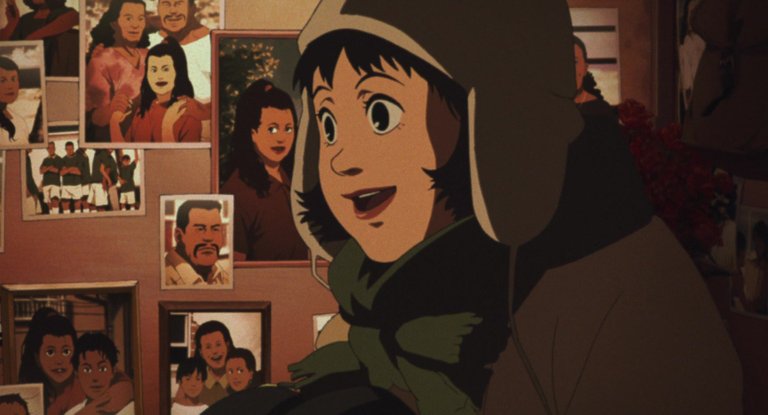
Source
In short, Gin, Hana, and Miyuki chose to live the life of a homeless person as penance for their faults. The protagonists' desire to be a member of a family unit, is a sad sensation heightened by the fact that they have formed (unconsciously) a kind of family with no other connection than the street.
Gin, Hana, and Miyuki are good-hearted, kind-hearted people, which is why divine intervention provides them with the opportunity to reunite with their loved ones, known as Kiyoko (the name of the little girl they find in the garbage).
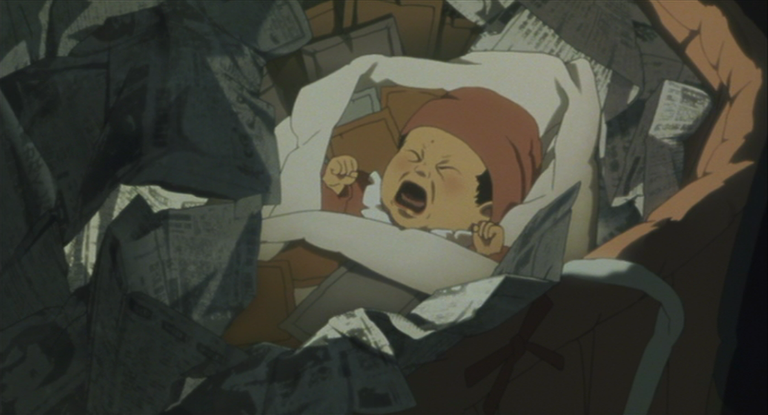
Source
The discovery of the small girl is not limited to a mere narrative device, but it also becomes an excellent metaphor for the lives that the Japanese author wishes to convey. The three characters' lives have been "thrown among the junk," determined by their incapacity to address the repercussions of their choices and the misery produced by their acts.
The newborn's function is to awaken the parts of the self that the three had chosen to deny, to drown in the trash, settling for a life free of responsibility, lived day after day, without obligations, addicted to the daily game in which they rebuild illusory bonds from which they believe they can escape at any time. The care given to the baby becomes a metaphor for the care that the three of them had decided to withhold up until that point.
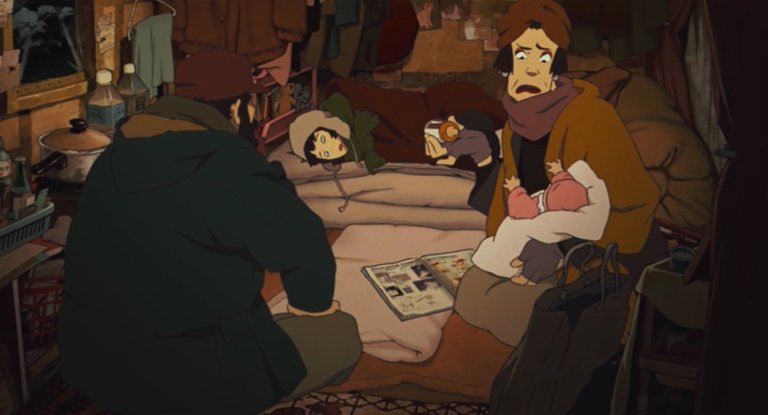
Source
The film is a beautiful Christmas tale, with a strongly optimistic message, given the many fortunate circumstances that happen to our protagonists throughout the course of the plot. Tokyo Godfather is a story about outcasts and excluded people that Satoshi Kon paints with valuable humanity, describing their lives, present, and past, in a truly sublime way and, as a result, exempt from any judgment.
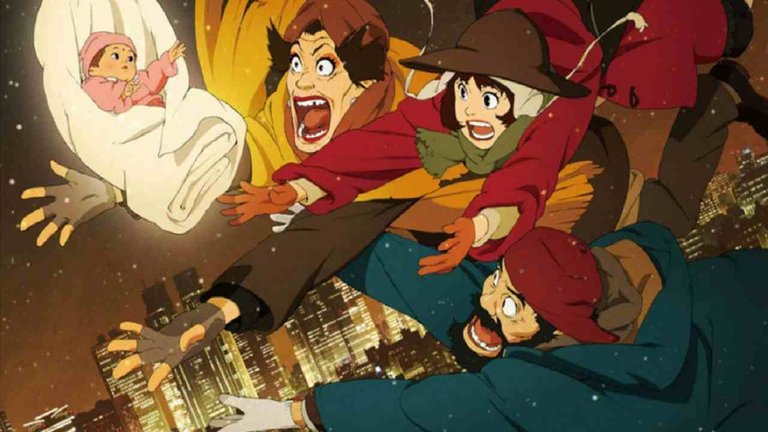
Source
At some points in the film I was even worried and anxious about the fate of the main characters, this just goes to show how much the film actually engaged me. I also don't remember any downtime in the narrative that made me distracted or bored, but rather I remember that many scenes made me laugh out loud, and that, in a film that deals with very serious basic topics, is no small feat. Dealing with such issues, making the viewer smile, I think is the best way to make him feel empathy for the characters without making it all expire in meaningless pity. After all, Kon, as I have already said several times, does not want to give any kind of judgment, and this is perhaps the feature that I enjoyed the most about this animated film.
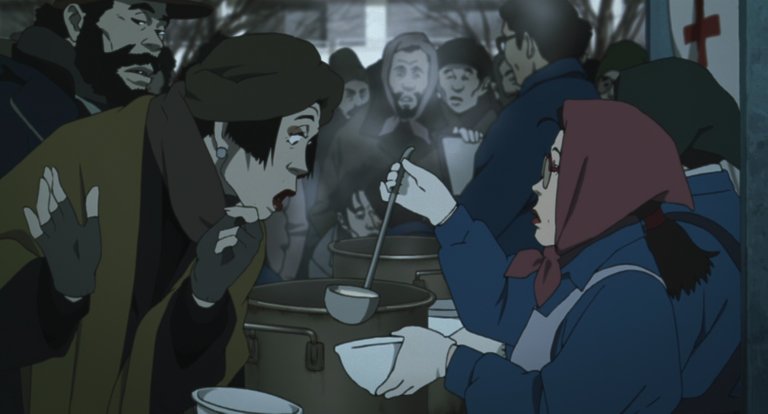
Source
Conclusion
This is a movie that I loved to watch, I found it really original and touching. Probably it doesn't have the visual appeal of Paprika nor its deftness of arguments (speaking in a scientific way, since also here the subject treated are really delicate), but still I was glued to the screen from the beginning to the end.
So, I definitely recommend this movie to everyone (even better if you get the chance to watch it on Christmas Eve!).
Rating
8.5/10.0

